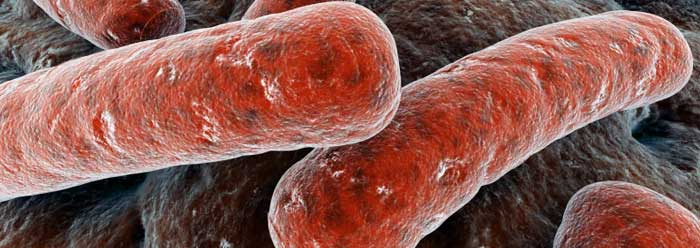Bacterial cells are singularly long-lived. They keep dividing for what seems like forever. But because they are made of biochemicals, their DNA and proteins should suffer damage similar to what any other cell endures, including animal cells. What keeps bacterial cell components from wearing down?
Microbiologists have been trying to find out how these single-cell organisms handle chemical damage, which relentlessly accumulates due to friction and uncontrolled chemical reactions. So far, the results have been confusing, but a new analysis appears to have confirmed that bacteria have a remarkably well-engineered damage-reduction program.
University of California, San Diego biologist Lin Chao led a computer analysis of prior experiments.1 His team's work, published in Current Biology, cited a 2005 study showing that bacteria do age and that the cells do accumulate damage. But a subsequent study clearly showed no evidence of aging in the same bacteria species. Chao's analysis asserts that both are true.
His team proposed that when one bacterium divides into two cells, more of the damaged biochemicals end up in one than the other of the daughter cells. After many generations, a single population of bacteria ends up as a mixture in which cells filled with accumulated damage live side-by-side with "rejuvenated" cells.2
Chao said in a university press release:
So for a single celled organism that has acquired damage that cannot be repaired, which of the two alternatives is better—to split the cellular damage in equal amounts between the two daughters or to give one daughter all of the damage and the other none?2
"We think evolution drove this asymmetry," he said. But he did not explain how. He also said, "Because you have this asymmetry, one daughter by having more damage has aged, while the other daughter gets a rejuvenated start with less damage."2
Of course, the species as a whole will survive longer if each generation could redistribute damaged parts. But allocating so many tiny parts is a horrendous logistical problem.
Since no problem ever solves itself, either an intelligent person continually selects and removes the damaged biochemicals, or an intelligent engineer encoded an internal apparatus that identifies and transports the tiny offending chemicals into one daughter cell and not the other. There is no evidence that engineers live inside bacteria, so the latter option fits best.
While it makes sense that a dividing bacterium would give more damaged biochemicals to one cell than another, it makes no sense that "evolution"—which by definition excludes intelligent causes—could "drive" such a strategy. Strategies always come from strategists and never from nature.
Such an ingenious design could only have come from an ingenious Designer.
References
- Rang, C. U., A. Y. Peng and L. Chao. 2011. Temporal Dynamics of Bacterial Aging and Rejuvenation. Current Biology. 21 (21): 1813-1816.
- McDonald, K. Do Bacteria Age? Biologists Discover the Answer Follows Simple Economics. University of California, San Diego news release, October 27, 2011.
* Mr. Thomas is Science Writer at the Institute for Creation Research.
Article posted on November 16, 2011.














